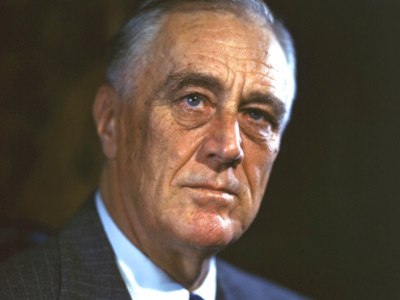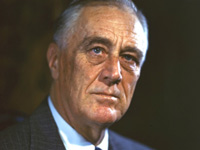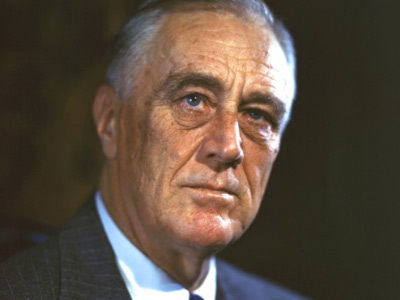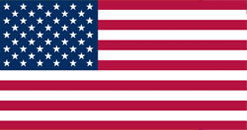Franklin Delano Roosevelt (1882-1945)

Presidency (1933–1945)
Roosevelt appointed powerful men to top positions but made certain he made all the major decisions, regardless of delays, inefficiency or resentment. Analyzing the president's administrative style, historian James MacGregor Burns concludes:
The president stayed in charge of his administration...by drawing fully on his formal and informal powers as Chief Executive; by raising goals, creating momentum, inspiring a personal loyalty, getting the best out of people...by deliberately fostering among his aides a sense of competition and a clash of wills that led to disarray, heartbreak, and anger but also set off pulses of executive energy and sparks of creativity...by handing out one job to several men and several jobs to one man, thus strengthening his own position as a court of appeals, as a depository of information, and as a tool of co-ordination; by ignoring or bypassing collective decision-making agencies, such as the Cabinet...and always by persuading, flattering, juggling, improvising, reshuffling, harmonizing, conciliating, manipulating.
HISTORY

RESOURCES
This article uses material from the Wikipedia article "Franklin Delano Roosevelt (1882-1945)", which is released under the Creative Commons Attribution-Share-Alike License 3.0.
© Stories Preschool. All Rights Reserved.










